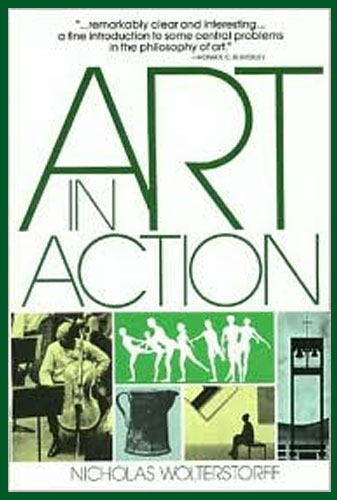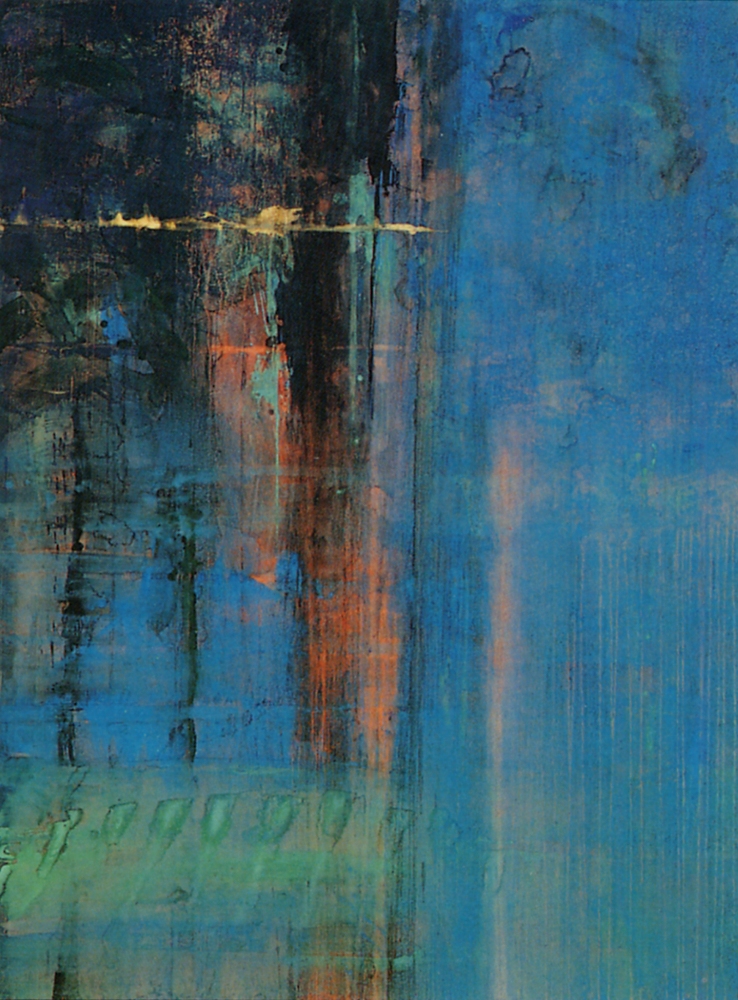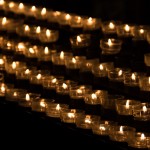 Nicholas Wolterstorff’s book on Art is appropriately titled Art in Action.
Nicholas Wolterstorff’s book on Art is appropriately titled Art in Action.
In it, Woterstorff states,
“Works of art equip us for action. And the range of actions for which they equip us is very nearly as broad as the range of human action itself. The purposes of art are the purposes of life. To envisage human existence without art is not to envisage human existence. Art—so often thought of as a way of getting out of the world—is man’s way of acting in the world. Artistically man acts.” (p 4-5)
But to what end? What is the purpose of humanity’s action through art?
The answer is Shalom.

“Shalom—of man dwelling at peace in all relationships: with God, with himself, with his fellows, with nature. Shalom is a peace which is not merely the absence of hostility, though certainly it is that, but a peace which at its highest is enjoyment. To dwell in shalom is to enjoy living before God, to enjoy living in nature, to enjoy living with one’s fellow, to enjoy life with oneself.” (Wolterstorff, p. 75)
Shalom is the purpose of all callings, of all vocations.
It is the purpose of art as well, for art is one of the ways that God brings about a lushness of life that goes beyond vulgar utilitarianism (which is a shameful sin of modern evangelical Christianity).
“We have adopted a pietistic-materialistic understanding of man, viewing human needs as the need for a saved soul plus the need for food, clothes, and shelter. True shalom is vastly richer than that.” (p. 82)

The great artist Makoto Fujimura writes some helpful advice to young artists:
“In Mark chapter 14, there is a story of a woman who broke all the social rules to get to Jesus, in a small room full of his male disciples. Mary brought a jar she had been saving for her wedding, and we are told that the jar of nard cost a person’s annual wages. When Mary barged in, broke the jar and poured her expensive perfumed oil upon Jesus’ feet, Judas and the other disciples responded, “What a waste!”
In the same way the world may see what you do and see what you are doing as wasteful extravagance.
The male disciples were shocked because what she did was not only extravagant, but sexual. The only time that aroma of perfume wafts into the air is on wedding nights! But Jesus said to all: “Leave her alone… Why are you bothering her? She has done a beautiful thing to me… I tell you the truth, wherever the gospel is preached throughout the world, what she has done will also be told, in memory of her” (Mark 14:6, 9).
What a commendation! Jesus, the ultimate Artist, recognized Mary as an artist, transgressing in love. Strict moralism has never produced great art.
Like Mary’s expensive oil, our expression flows out as a response to grace in our lives.”
How, then, can we purposely seek shalom for our world? How can we embrace art as one of the means for shalom? Can we allow extravagance of artistic expression?
Image: “Crossway Matthew 14,” Mineral Pigments on Kumohada by Makoto Fujimura












